Hey there again! Glad you’re back for the next step in our “Synth Secrets” journey. In Part 1, we unlocked the basic mystery of what synthesis is – creating sound electronically, building it from the ground up, not just recording what’s already there.
Before we dive deeper into the nuts and bolts of how synthesizers make sound (that’s coming soon, I promise!), it’s super helpful to understand where they came from. Synthesis didn’t just appear out of nowhere! It’s a story of inventors, musicians, engineers, and a constant push to create new sounds.
So, let’s take a trip back in time and explore the fascinating history of synthesizers!
The Very Early Spark: Tinkering with Electricity for Sound (Late 1800s – Early 1900s)
Long before anyone built what we’d recognize as a synthesizer, people were experimenting with using electricity to make sound. Think crazy, room-sized contraptions!
- The Telharmonium (1897): Imagine a machine weighing 200 tons that used rotating dynamos to generate musical tones that could be sent over telephone lines! It was less a performance instrument and more an early concept of generating music electronically. Not exactly portable, but a foundational idea.
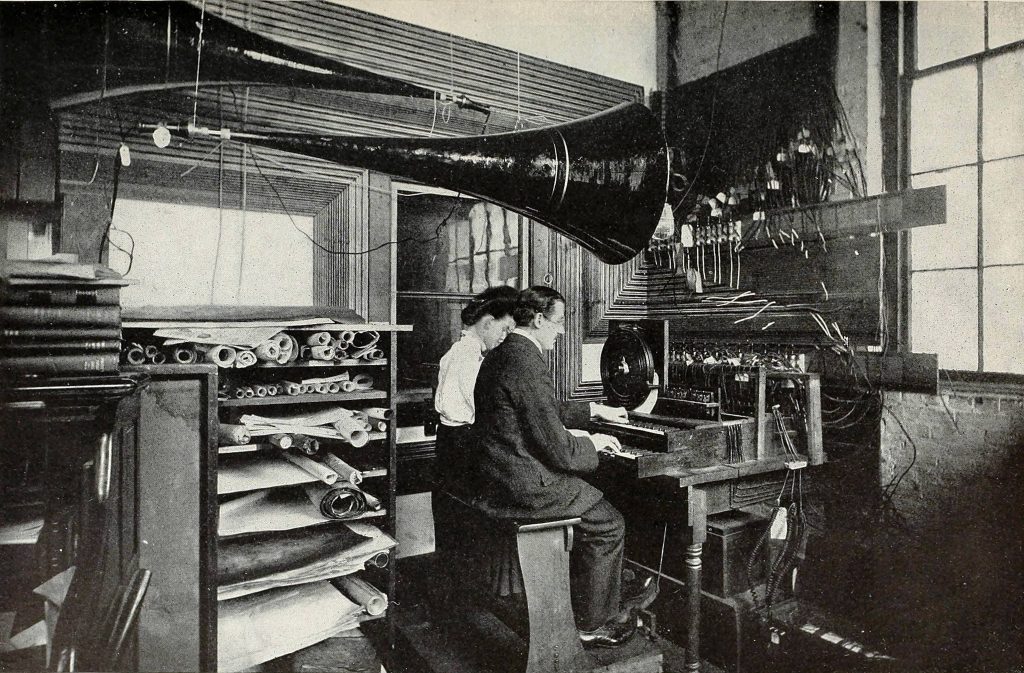
- The Theremin (around 1920): You’ve probably heard this spooky, warbling sound in old sci-fi movies! Played by moving your hands in the air near antennas (one for pitch, one for volume), the Theremin is a truly unique and expressive early electronic instrument. It showed that electricity could not only make sound but also be controlled in musical ways.
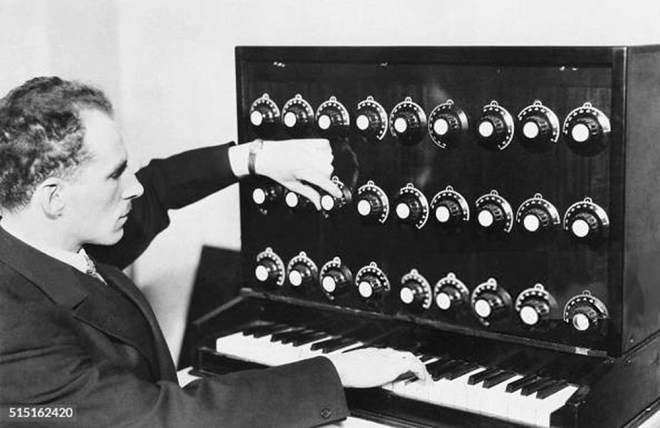
- The Ondes Martenot (1928): Another early instrument, often played with a keyboard and a ribbon controller for smooth pitch slides. It produced beautiful, ethereal tones and found its way into orchestral music.
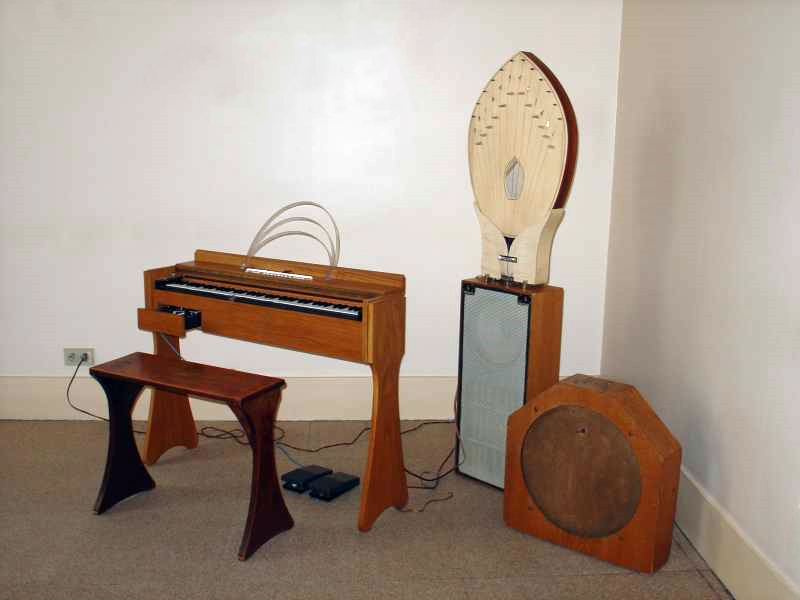
These early machines were fascinating but often tricky to control and expensive. They were more experimental wonders than practical music tools for most people.
The Birth of Voltage Control: The Modular Era (1950s – 1960s)
This is where things start to look a bit more like what we think of as a synthesizer! A key breakthrough was the concept of voltage control. This meant that instead of having to manually adjust knobs for every single change (like pitch or loudness), you could use a voltage signal to control those parameters. This opened up a world of possibilities for making sounds move and change automatically.
Two big names emerged around this time, often seen as the pioneers of modular synthesis:
- Robert Moog: (Pronounced like “vogue,” not “moo-g”). Working in the US, Moog developed synthesizers built from separate modules (like oscillators, filters, amplifiers) that you connected with patch cables. This allowed for incredible flexibility and experimentation. Musicians and composers started using Moog’s systems to create entirely new electronic sounds.
- Don Buchla: Also working in the US at roughly the same time, Buchla took a slightly different approach, often focusing less on traditional keyboard interfaces and more on experimental control methods. His systems were also modular and highly influential in avant-garde electronic music.
These early modular synths were still complex, large, and expensive, mostly found in universities and specialized studios. Think walls of knobs and spaghetti-like patch cables!
Synthesis Goes Pop: The Era of Integrated Synths (Late 1960s – 1970s)
While modular synths were powerful, they weren’t exactly stage-friendly for a rock band. The next big leap was creating integrated, self-contained synthesizers that were more portable and easier to play.
- The Minimoog (1970): This was a game-changer! Robert Moog took the essential modules from his large systems and built them into a single, portable keyboard instrument. It had a clear layout, sounded fantastic (especially those fat basses and leads!), and, crucially, musicians could actually take it on tour. The Minimoog became incredibly popular and helped bring synthesis into mainstream rock, funk, and jazz music.
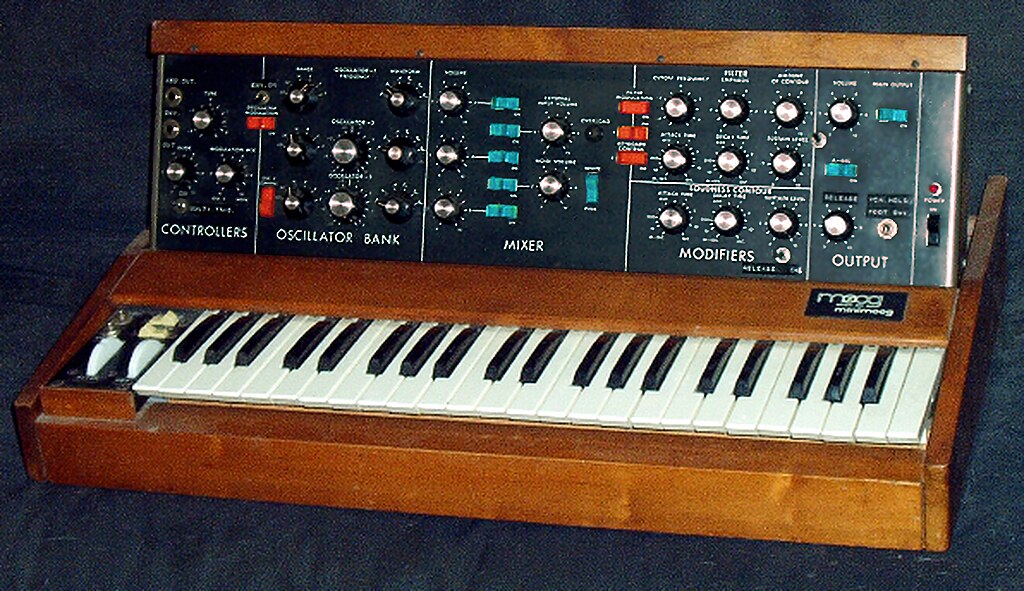
- Other Greats of the Era: Companies like ARP (with their ARP 2600 and Odyssey), EMS (Synthi A, VCS3), and Sequential Circuits (the Prophet-5, a landmark for polyphony – being able to play multiple notes at once!) were all pushing the boundaries, creating instruments that defined the sound of the 70s and early 80s.
This period saw synthesizers evolve from experimental tools into legitimate musical instruments used across many genres.
The Digital Revolution and MIDI (The 1980s)
The 1980s brought massive changes, driven by advances in digital technology and the invention of MIDI.
- FM Synthesis Takes the Stage: As we just touched on in the previous post, digital FM synthesis became a major force. The Yamaha DX7 (1983) was a digital FM synth that was affordable, reliable, and could create a huge range of sounds (especially those iconic bells, pianos, and basses). It sold in massive numbers and its sound became synonymous with the decade.
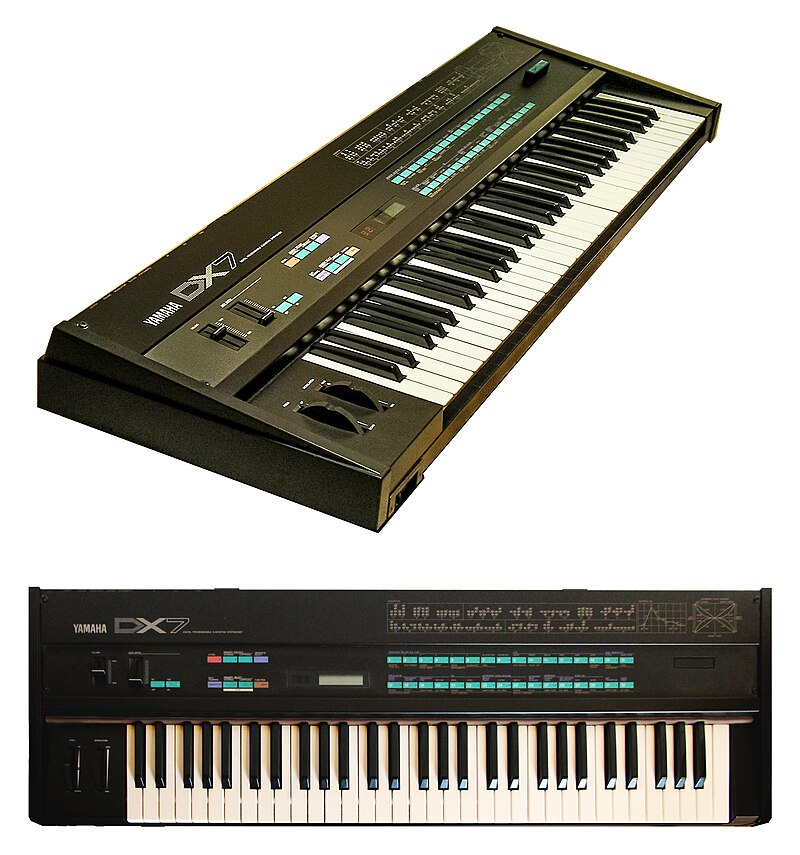
- MIDI (Musical Instrument Digital Interface) (1983): This was arguably as big as voltage control! MIDI is a technical standard that allowed different electronic instruments and computers to communicate with each other. Suddenly, you could control multiple synths from one keyboard, sequence music on a computer, and synchronize everything. This connectivity revolutionized music production.
- Sampling Becomes More Accessible: While the Mellotron (using tape loops) was an early sampler, the 80s saw digital sampling become more practical. Machines like the Fairlight CMI and E-mu Emulator allowed musicians to record any sound and play it back on a keyboard, adding a whole new dimension to synthesis.
The 80s saw synths become digital powerhouses, deeply integrated with computers, and producing sounds that defined genres like synth-pop and new wave.
The Rise of Software and the Return of Modular (1990s – Present)
The increasing power of personal computers in the 90s led to another revolution: Software Synthesizers.
- Virtual Instruments (VSTs, Audio Units, etc.): Suddenly, you didn’t need expensive hardware. You could run powerful synthesizers inside your computer using software plugins. This made synthesis incredibly accessible to anyone with a computer and a Digital Audio Workstation (DAW) like Ableton Live, Logic Pro, or Pro Tools. Software emulations of classic synths (like the Minimoog or DX7) became popular, alongside entirely new digital designs.
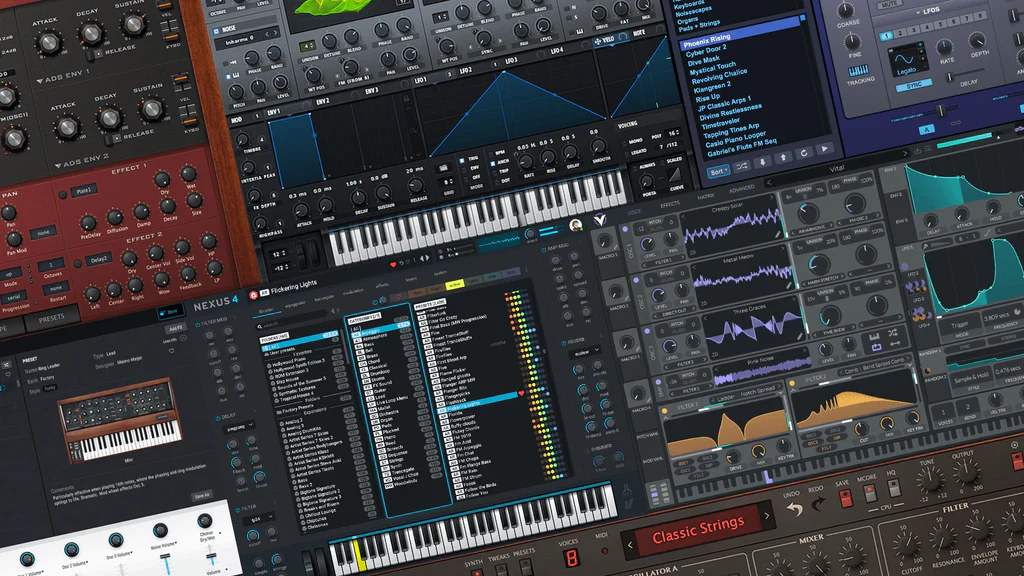
- Virtual Analog: Early software synths often focused on emulating the sound and behavior of classic analog synths, leading to the “virtual analog” category.
- The Eurorack Boom: Interestingly, alongside the rise of software, there’s been a massive resurgence in modular synthesis, particularly the more compact “Eurorack” format. Many musicians and sound designers are drawn back to the hands-on, experimental nature of patching cables and building unique systems.
- New Synthesis Methods: Techniques like Granular Synthesis, Physical Modeling, and Spectral Synthesis became more widely available and integrated into software and some hardware.
Today, the landscape is incredibly diverse. We have powerful software synths, innovative hardware instruments, and a thriving modular community, offering more ways to create sound electronically than ever before!
From Wires to Waves: The Evolution Continues
Looking back at this history, you can see a constant thread: the desire to control electricity to make musical sounds, to create new timbres, and to make these tools more accessible and expressive. From the room-sized Telharmonium to a powerful synth plugin on your laptop, the core idea remains the same: synthesis is about crafting sound.
Understanding this history helps us appreciate the tools we have today and see the lineage of ideas that brought us here. It also reminds us that the fundamental building blocks – the oscillators, filters, and envelopes we mentioned in Part 1 – are still the heart of many modern synthesizers, even in their digital forms.
In the next post of “Synth Secrets,” we’re going to zoom back in and start exploring those foundational components in detail, beginning with the very source of sound: Oscillators and Waveforms.
Stay tuned, and get ready to make some noise!
What’s the oldest or most interesting synthesizer you’ve ever heard of or seen? Share your thoughts in the comments!
